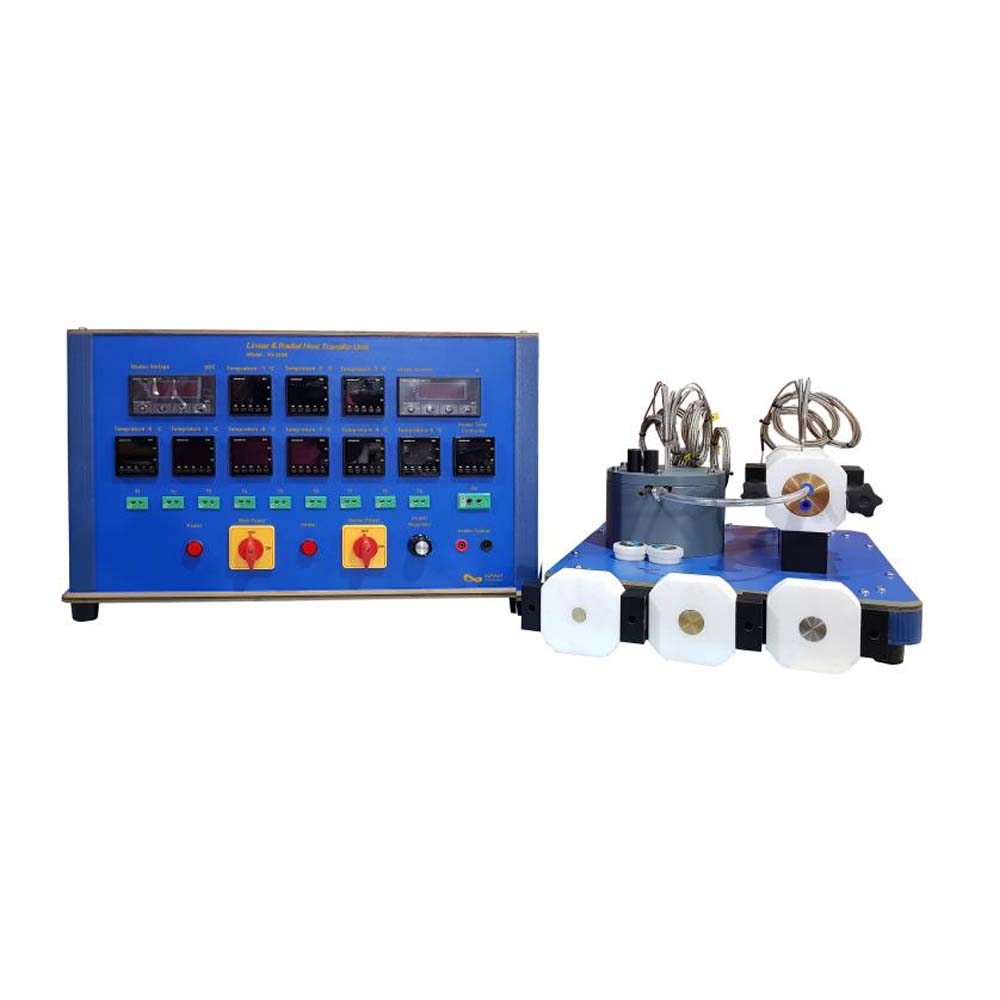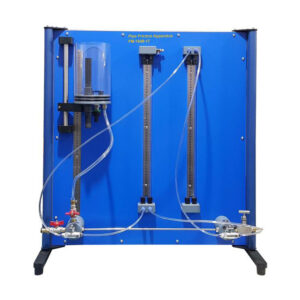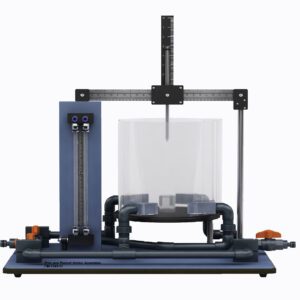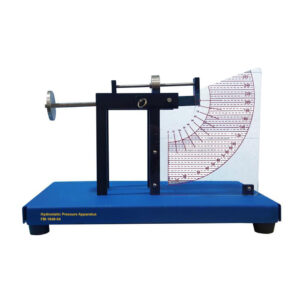Thermal conduction is the mode of heat transfer, which occurs in a material by virtue of a temperature gradient. A solid is chosen for the demonstration of pure conduction since both liquids and gases exhibit excessive convective heat transfer. In a practical situation, heat conduction occurs in three dimensions, a complexity which often requires extensive computation to analyze. In the laboratory, a single dimensional approach is required to demonstrate the basic law that relates rate of heat flow to temperature gradient and area. The unit consists of two electrically heated modules mounted on a bench support frame. One module contains a cylindrical metal bar arrangement for a variety of linear conduction experiments while the other consists of a disc for radial conduction experiment. Both test modules are equipped with an array of temperature sensors. Cooling water, to be supplied from a standard laboratory tap is fed to one side of the test pieces in order to maintain a steady temperature gradient. The instrumentation provided permits accurate measurement of temperature and power supply. Fast response temperature probes with a resolution of 0.1°C are used. The power control circuit provides a continuously variable electrical output of 0-150 Watts. The test modules are designed to minimize errors due to true three-dimensional heat transfer. The basic principles of conduction can be taught without knowledge of radiation or convective heat transfer. The linear test piece is supplied with interchangeable samples of conductors to demonstrate the effects of area, conductivity and series combinations. Contact resistance may also be investigated, and the important features of unsteady state conditions may be demonstrated. The apparatus may also be used to measure thermal conductivity of various solid materials, by clamping a sample of specific dimensions between the hot and cold elements.
Unit Assembly
The equipment comprises two heat-conducting specimens, a multi-section bar for the examination of linear conduction and a metal disc for radial conduction. A control panel provides electrical and power digital display for heaters and temperature in the specimens and temperature from the selector switch for data acquisition system (optional). A small flow of cooling water provides a heat sink at the end of the conducting path in each specimen.
Experiments
- Linear heat conduction (plane wall)
*Determination of temperature profiles for different materials
*Determination of temperature profile in case of disturbance
*Determination of thermal conductivity - Radial heat conduction
*Determination of temperature profile
*Determination of thermal conductivity
Specifications
- Table top standalone unit
- Linear heat conduction with 3 measuring
- Heating and cooling elements in linear module with an array of 9 temperature measuring points
- Radial heat conduction with a brass disc
- Heating and cooling elements in radial module with 6 temperature measuring points.
- Cooling by means of water
- Electrical heating element
- Display of temperatures, heating power and air velocity on control panel.
- Display of temperatures, heating power and air velocity in the software (if DAQ selected)




